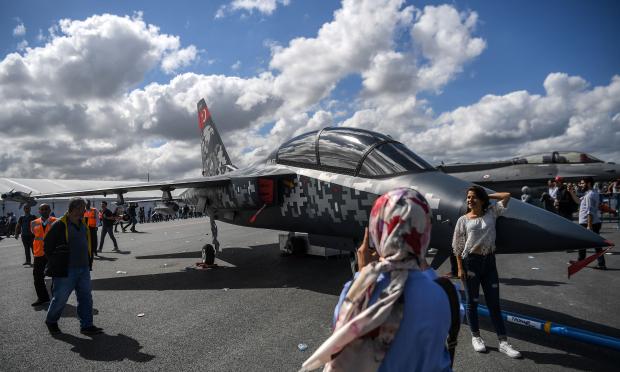"Aviation high schools" beyond the usual seems to be what the US is doing in Turkey, delaying the shipment to Ankara of 100 US F404 engines for the HÜRJET close air support training aircraft from General Electric (GE).
The problem was revealed in a Turkish media article, pointing out the following, among other things:
The "torment of the drop" of the USA towards Turkey
TUSAŞ General Manager Temel Kotil referring to a journalist's comment that the HÜRJET engine was purchased from the USA and that these engines may not come in case of deterioration of relations between the two (2) countries, said:
"If they don't come, we'll make them, but that will put 2-3 years back. That's the whole point. Our orders are massive. If there is a problem, we will see ahead.'
Temel Kotil, Director General of the Turkish Aerospace Industry (TUSAŞ), said that they plan to fly the KAAN National Fighter Aircraft in 2028 with a Turkish engine, "We are working on it," he said.
The International Defense Industry Exhibition (IDEF'23), which is one of the largest gatherings of the defense industry in the world and has become an important platform for promotion, marketing and cooperation in this field, continues.
The fair, which is organized under the auspices of the Presidency, hosted by the Ministry of National Defense, under the management and responsibility of the Turkish Armed Forces Foundation (TSKGV) and organized by Tüyap Tüm Fuarcılık Yapım AŞ, is held at the Tüyap Fair Convention Center.
TUSAŞ Director General Temel Kotil, who met with members of the press as part of the exhibition, said in a statement that the HURJET continues to fly successfully, that work on the national fighter jet KAAN continues and there is no obstacle ahead, as well as in the training of the pilots in the simulator manufactured by HAVELSAN.
Turkey has made advances in aircraft engine manufacturing
"Turkey is taking very serious steps in the matter of building engines, but it is not as fast as an airplane. Because especially the 'hot area' needs to be studied very well," said Kotil.
Asked about the number of engineers employed by the company, Kotil said there is no shortage of staff, the number of engineers has crossed 6000 and the number of staff has reached 15000.
On the question about the engine to be used in the KAAN national fighter jet, Kotil said, "Our plan is to fly the KAAN with a Turkish engine in 2028. We are working on it. Of course, it will take 1-2 years again for certification. However, there will be a Turkish engine in 2030. We are currently flying the F110 engine," he said.
The HÜRJET program
Work on the HÜRJET Jet Trainer Project began in August 2017. The first aircraft, whose production was completed, was transferred to the final assembly line in a ceremony held on June 10, 2022.
After the assembly activities were completed, ground tests (landing gear, wiring, canopy mechanism, electrical tests) began and HÜRJET successfully completed the first engine start requirements, aeroelectric system, electrical system and fuel tests as well as engine start, a of the most important turning points of the project, on January 30, 2023.
HÜRJET then performed "taxi" tests from March 18, 2023, and completely left the ground flying into the sky on April 25, 2023.
With the HÜRJET, TAI aims to replace the T-38 trainer aircraft in the Air Force Command's inventory and the F-5 aircraft used in aerobatic displays, but also to acquire a close air support aircraft.
The HÜRJET, according to the Turks, will be compatible for use by their mini aircraft carrier TCG Anadolu, while it will also be able to operate as a close air support aircraft for the combat units of the Turkish military.
The provision in simple terms, means that during the conduct of Turkish ground offensive operations or airborne operations in the Evros, as well as amphibious-landing-airborne operations on our islands, Turkish drones, attack helicopters and light HÜRJET aircraft will attempt to act as a force multiplier in friendly offensive missions of engaged units near the POT (forward location boundary) or their immediate reserves.
Conclusion
The wise Greek people when there are signs of trouble coming say, "where there's smoke, there's fire".
This appears to be the case with the delay in sending US F404 engines to Turkey, showing that the redefinition of the two countries' transitioning relationship is far from clear-cut.
If the engines in question are ultimately not shipped to Turkey due to the deterioration of Washington-Ankara relations, Erdogan's production schedule for a fleet of 100 HURJET aircraft, as well as its exports to other countries, is thrown into the air, since it will take 2-3 years to build a Turkish engine for them.
Finally, any negative course of American-Turkish relations, in our estimation, will directly adversely affect the Greek-Turkish approach



